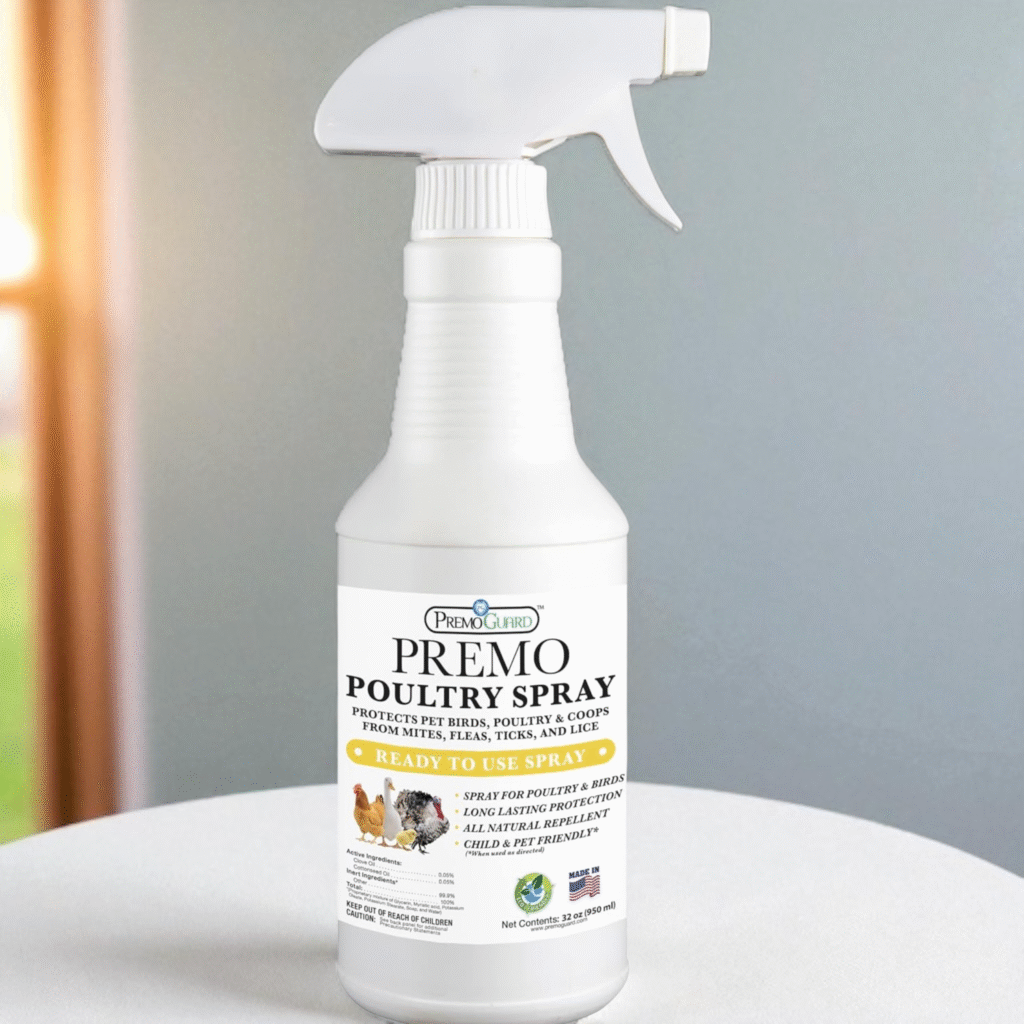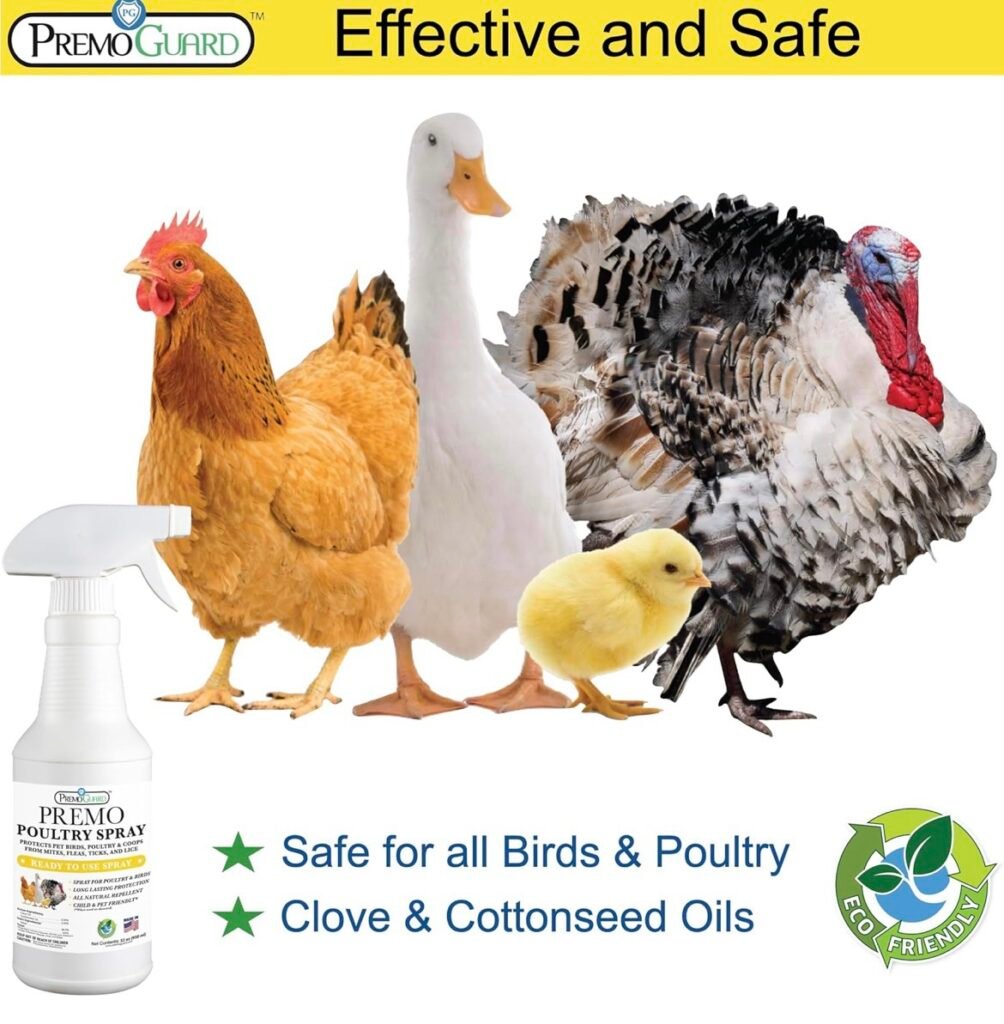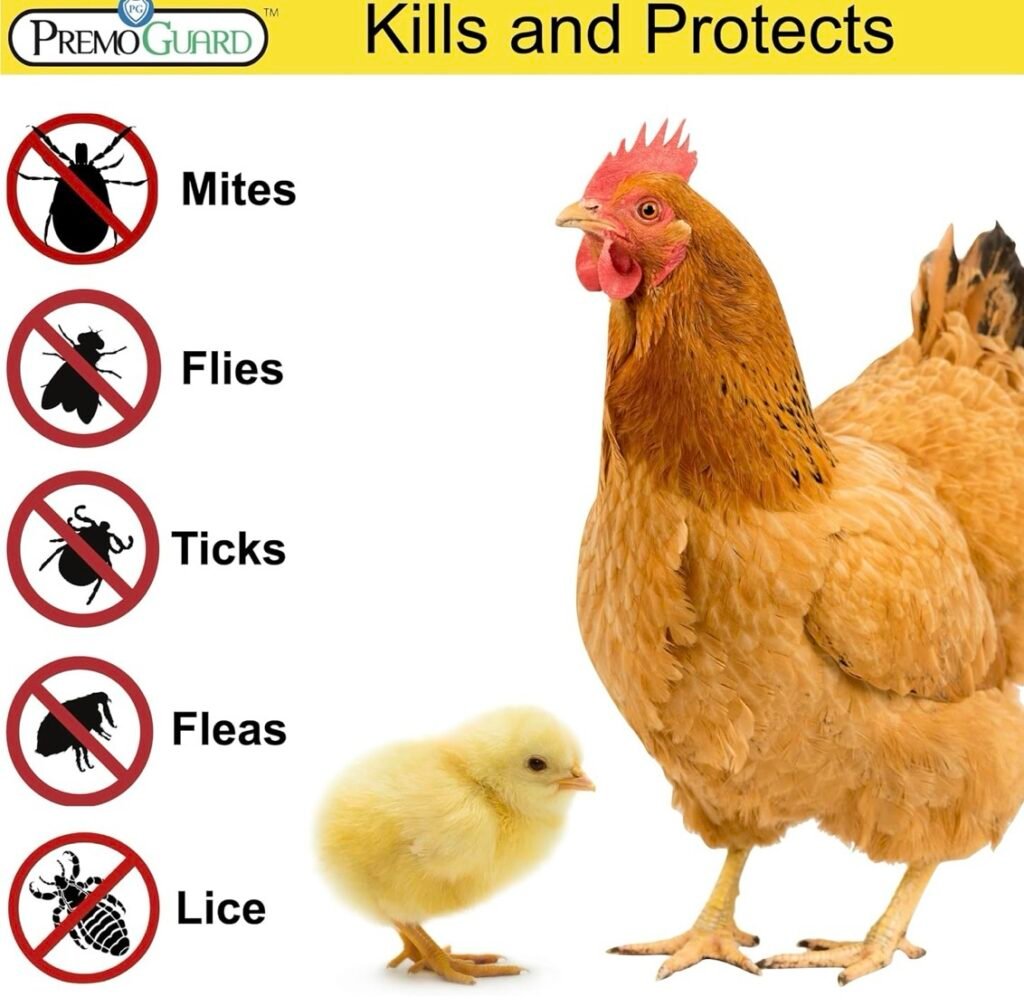
What Do Chicken Ear Mites Look Like?
Ear mites in chickens are tiny, almost impossible to see with the naked eye. You might notice your hen tilting her head, scratching behind her ears, or even experiencing balance issues. The area inside or behind the ears may look crusty or inflamed.
In more severe cases, the chicken’s comb may appear pale or floppy, and weight loss can follow. If you’re seeing a floppy comb on your chicken, there may be more going on, and it’s worth checking out these 7 possible reasons for a droopy comb.
How Chickens Get Ear Mites in the First Place
Ear mites usually come from contact with wild birds or infested environments—think dirty coops, shared feeders, or even new birds introduced without proper quarantine. These pests are sneaky and can go unnoticed for weeks.
If you’re raising chickens outdoors or free-ranging, it’s wise to know the advantages of free-range chickens as well as the added responsibility of preventing parasites.

The Best Product I Found to Treat Chicken Ear Mites
After trying several approaches, I finally found something that actually worked: Premo Guard Poultry Spray. It’s made with plant-based oils, completely safe for your flock, and the best part? There’s no egg withdrawal period—meaning you don’t have to toss any of your precious eggs while using it.
You just spray it directly on the affected areas and around the coop. It also helps control other parasites like lice and scaly leg mites. I now keep this stuff stocked in my coop cabinet—it’s become a go-to for anything creepy-crawly.
Preventing Mites Before They Show Up Again
Treatment is one thing, but prevention is the real secret. Here’s what worked for me:
- Regular coop cleaning with apple cider vinegar or poultry-safe disinfectants.
- Dust baths with food-grade diatomaceous earth.
- Rotating perches and bedding to avoid buildup of mites.
- Spraying roosting bars weekly with Premo Guard for peace of mind.
- Offering chickens plenty of grit, which you can read more about in this guide on why chickens need grit daily.
It’s not just about getting rid of mites—it’s about keeping your flock happy and stress-free so they stay resilient against pests.

Keep Nesting Areas Clean and Inviting
One surprising way to reduce the risk of mites (especially scaly leg or red mites) is by keeping your nesting boxes clean and cozy. When chickens refuse to roost and instead hang out or sleep in dirty nesting areas, you’re inviting pests in. Mites love dark, undisturbed corners, and that’s exactly what an ignored nesting box becomes.
If you haven’t already, check out how to stop chickens from pooping in nesting boxes — it’s a must-read for keeping your coop hygienic and helping hens lay in peace. Once you clean things up, add fresh bedding and maybe even toss in a ceramic egg to encourage proper laying behavior.
Don’t Underestimate the Power of Grit
I’ve learned the hard way that when chickens don’t get enough grit, their digestion suffers—and that weakness can make them more prone to parasites and other health issues. Grit isn’t medicine, but it keeps their digestive system strong, which plays a role in their overall immunity.
If you’re new to this, we’ve got solid info about why chickens need grit in their diet and how to make sure they’re getting enough. A healthy bird with a strong gut is less likely to get overrun by mites or lice in the first place.

Control Boredom with Enrichment
Bored chickens can start pecking each other, get aggressive, or even stress themselves into weaker immune systems. That stress opens the door for pests to thrive. So don’t underestimate the power of simple enrichment. Hanging cabbage, adding roosting branches, and giving them room to scratch around goes a long way.
We’ve shared some tips in our post on what chickens need to survive that tie right into keeping them active and healthy—physically and mentally.
Use a Safe, Natural Mite Treatment
If your chicken is already scratching, shaking her head, or has redness around the ears or legs, it’s time to act. I personally recommend Premo Guard Poultry Spray. It’s a natural, plant-based spray that kills mites, lice, and even scaly leg mites on contact—and it’s safe for your family, your flock, and your eggs (no egg withdrawal time!).
It’s especially useful for treating hard-to-reach areas like chicken ear mites or mites hiding near vent feathers. Spray it directly into the coop too, not just on the bird, for full protection.

Watch for Red Flags in Behavior
When chickens get mites, their behavior often changes before you ever spot a bug. Are they shaking their heads more than usual? Scratching at their ears or flanks? Spending more time in the dust bath than usual? These subtle signs can mean something’s not right.
Sometimes a floppy comb is your first clue something’s off. If you notice that along with itching or shaking, check out why your chicken’s comb might be floppy. That article helped me figure out what was wrong with one of my hens before things got worse.
Improve Coop Conditions to Prevent Recurrence
Mites love poor ventilation, moisture, and cramped conditions. One of the easiest ways to stop an infestation from returning is to make your coop less inviting to pests. Improve airflow, reduce moisture, and clean your coop regularly. Replace straw or bedding weekly and use a mite deterrent after cleaning.
Adding Premo Guard Poultry Spray to your regular coop maintenance routine makes a big difference. A quick mist inside the nesting boxes and corners where pests hide can stop future outbreaks before they start.

Understand the Life Cycle of Mites
One reason mites are so hard to get rid of is their sneaky life cycle. They often hide in crevices during the day and come out at night to feed on your birds. That’s why you may not even see them at first—and why treatments often have to be repeated every 5 to 7 days to kill newly hatched mites.
Knowing this helps you create a plan that works. If you want to make sure your coop setup is working for you and not against you, read about how to keep chickens warm in winter without electricity. That post covers coop adjustments that also help with ventilation and pest control.
Keep a Healthy Routine Year-Round
Prevention is key. Just like us, chickens need routine care—from balanced feed and supplements to grit, dust baths, and stress-free space. This helps them stay strong enough to fight off minor infestations before they explode.
We already put together a great post on what every chicken needs to thrive if you need a refresher. It’s a solid starting point for anyone building a healthy, parasite-resistant flock.

Don’t Wait—Start Treating at the First Sign
When it comes to mites, the sooner you act, the better. Even a small infestation can spread fast, and before you know it, your whole flock is scratching and your egg count drops. That’s why I always keep Premo Guard Poultry Spray on hand—so I can hit the coop and birds with it at the first sign of trouble.
If you’re noticing messy nesting areas or chickens avoiding the boxes, be sure to read how to stop chickens from pooping in nesting boxes. Clean boxes not only reduce mites but keep your hens laying in the right place.
As an Amazon Associate we earn from qualifying purchases through some links in our articles.



